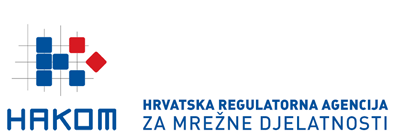HAKOM: Positive trends in passenger and cargo rail trafficPRESS RELEASEIn the last quarter of 2015, the rail services market recorded positive trends in passenger transport. The total number of transported passengers was 48 percent more compared to the quarter before that; although it should be pointed out that the transportation of migrants and refugees has not been included in the calculation. ZAGREB, 2 March 2016 - In the fourth quarter of 2015, the rail services market with its infrastructure manager HŽ Infrastruktura which is providing the services to the railway undertakings, recorded an increase in the use of rail services which is the result of full market liberalization. A complete rail market liberalization in 2015 which was also the first year of work by the new railway carriers can be noticed through a transparent access to all railway services. Transparent access was reached through the public announcement of conditions and ways of service provision by the service provider, which was initiated by HAKOM, the market regulator pursuant to the Railway Act. The use of railway infrastructure in the fourth quarter of 2015 rose by 1 percent compared to the previous quarter as a result of the new freight railway. At the same time, the passenger rail transport recorded an increase by48 percent compared to the quarter before. This is largely due to continuous behavioural patterns of passengers in the use of rail transport since the last quarter traditionally recorded the increase in passenger rail transport. It is important to emphasize that the number of transported passengers in the last quarter of 2015 does not include migrants and refugees transport what makes the achieved result even more significant. Passenger traffic recorded an increase by 41 percent in the number of passenger-kilometres in the fourth quarter of 2015 compared to the previous quarter indicating that a significant progress was made in 2015 in the work of passenger transport. The reason for that is better transportation offer. The travelled freight tonne-kilometres recorded a growth by2 percent in the fourth quarter of 2015 compared to the previous quarter as a result of new cargo carrier activities. It is important to emphasize that the growth indicators have been achieved during the migrant crisis, which has led to the restrictions in the use of the railway infrastructure through a reduced circulation at the border crossings with Slovenia and Hungary. The rail services market indicators are available at the link default.aspx?id=29 # # # For additional information please contact: Croatian Regulatory Authority for Network Industries (HAKOM) Roberta Frangeša Mihanovića 9 10110 Zagreb, Croatia Tel. + 385 (0) 1 700 70 07 Fax + 385 (0)1 700 70 70 Media inquiries can be submitted online using HAKOM’s official website: Registration required. ABOUT HAKOM: HAKOM (www.hakom.hr) - Croatian Regulatory Authority for Network Industries – ensures preconditions for a fair market competition, stable growth and environment for innovations in the electronic communications and postal services market. HAKOM protects users’ interests and the possibility of choice among various communications and postal services at affordable prices, defines sustainable competitive conditions for operators and service providers under fair conditions for return on investment, and provides support to economic growth, public services and the quality of life in the Republic of Croatia by using modern technologies. HAKOM’ strategic goals are: to promote regulation of the electronic communications and postal services market, to support growth of investments and innovations in the electronic communications and postal services market, to provide efficient use of limited resources, to accelerate the growth of broadband products and services, to provide affordable offers of communications and postal services, to provide protection and informing of users, to build an efficient and comprehensive information system, to define and implement efficient processes, and to acquire multi-disciplinary competencies in market regulation. |
 |
|
|